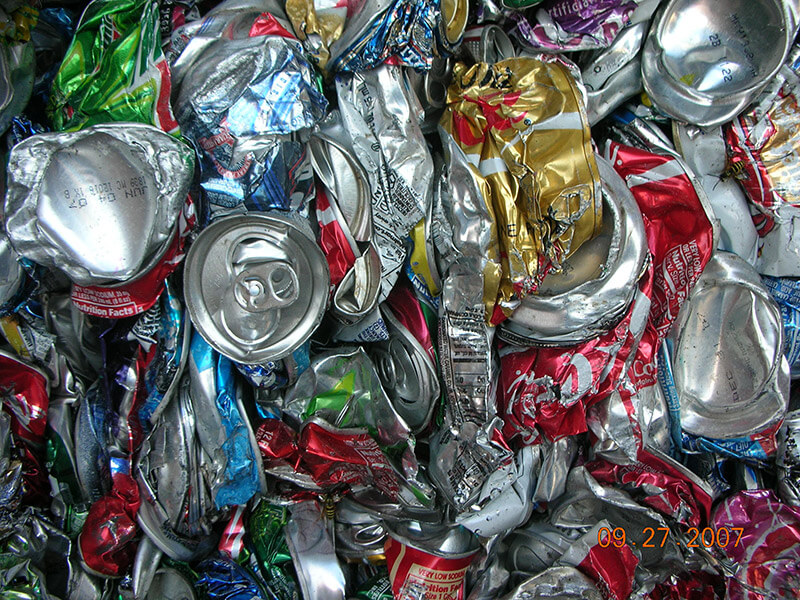
 Scrap metal processors handle enormous amounts of non-ferrous scrap metal each year in the United States alone.
Scrap metal processors handle enormous amounts of non-ferrous scrap metal each year in the United States alone.
All metals, including both non-ferrous and ferrous, can be recycled indefinitely without losing their properties. For a large number of scrap metal processors, this is a highly desirable feature. As the value of non-ferrous metals such as exotic metal shavings and aluminum continues to rise, specialized bailing equipment has become necessary. NRI Metals can provide the optimal solution for businesses of any size, from large-scale industrial production facilities to small metal fabrication businesses.
Recycling non-ferrous metals is advantageous.
The use of both non-ferrous and ferrous metals has increased steadily over time. Alone, the amount of aluminum produced is staggering. Australia is the world’s largest producer of primary aluminum, producing approximately 24 million tons per year on average. It is more important than ever to find additional value in the reuse of scrap metal, given the general increase in metal production and the continuing depletion of the valuable resources required for their production.
Plastic packaging recycling can be complicated due to the need to separate it into different types and its heterogeneous nature, whereas metal packaging recycling is a simpler process. The use of magnets to separate non-ferrous and ferrous components solves a significant identification issue.
When non-ferrous metals are recovered for recycling, economic and environmental benefits are also realized.
- Recycling of non-ferrous metals promotes the growth of new markets.
- Recycling non-ferrous metals is a viable source of revenue.
- Non-Ferrous Metal Recycling provides additional manufacturing-reusable materials.
- Recycling non-ferrous metals increases employment opportunities.
- Recycling non-ferrous metals produces less pollution and greater energy savings, making it more environmentally friendly overall.
- Recycling of non-ferrous metals provides a safer workplace.
Recycling non-ferrous metals helps free up space.
Non-Ferrous Metallic Elements
Aluminum is extracted from bauxite, a clay-like ore containing abundant quantities of aluminum compounds. It is only found as alumina, a compound and brittle material composed of aluminum and oxygen. To liberate the aluminum, the oxygen must be removed from the alumina within a molten salt in a reduction plant. A strong electric current is then passed through the liquid to separate the aluminum and oxygen. Huge amounts of energy are utilized in this procedure. Aluminum is one of the most cost-effective recyclable materials. Aluminum recycling requires significantly less energy than aluminum production. Recycling aluminum uses only 5% of the energy and produces only 5% of the CO2 compared to the primary production of aluminum. Additionally, it reduces the amount of waste sent to landfills. Aluminum has the added benefit of being recyclable indefinitely, as its structure is not compromised by reprocessing.
Other Metals
All of the other types of non-ferrous metals can also be recycled, albeit in typically smaller amounts. These metals include brass, lead, gold, silver, copper, and nickel, and certain industries, such as the Technology and Electronics Industries, rely heavily on them. As a result of their increased value, fewer of these materials are in circulation, and when they are discarded, their ability to be recycled is frequently disregarded.
Non-Ferrous Metals Balancing
Bulky non-ferrous metals, such as industrial manufacturing process clippings, obsolete scrap, and aluminum beverage cans, are collected to initiate the non-ferrous metal recycling process. These materials are then compressed into bales of varying sizes. In addition to other types of waste handling equipment, conveyors and front-end loaders are used to feed these bully materials into balers. There are numerous types of recycling balers used for aluminum can recycling and scrap recycling. Certain balers are designed to compress bulky materials under high pressure into dense, uniformly sized bales. Our customers can remelt them efficiently. Other balers are designed for compressing bulky materials at lower pressure levels into less dense, larger, uniform sizes that can be efficiently stored and transported to customers who require the delivery of certain materials in that form.
Non-ferrous metal bale weights will vary greatly based on the type of material baled and the size and configuration of the non-ferrous baler.



